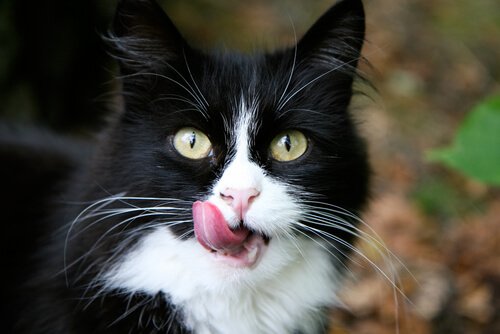Viral Diseases in Cats


Written and verified by the lawyer Francisco María García
Viral illnesses can affect domestic and street cats, including all breeds.
Cats are known for their noble demeanors and independent characters. However, it would be a mistake to assume that their autonomy means they need less care. Therefore, just like any living thing, cats can get sick and need medical attention.
What are the most common feline viral diseases?
1. Feline leukemia
This viral disease usually appears in kittens, especially when multiple cats live together. Due to its quick transmission and deadly nature, it is also considered one of the most severe cat diseases.
Feline Leukemia is a type of oncovirus transmitted by direct contact with bodily fluids. The replication of the pathogen in the organism cause cancer. The main way to get infected is by direct contact with a sick cat. Likewise, leukemia can be transmitted through urine, feces, sneezes, or saliva of infected animals.
Once inside the organism, the virus can remain encapsulated for around three years. So, for this reason, the incubation period can widely vary, from a few weeks to over 30 months.

The most frequent symptoms of feline leukemia are:
- Loss of appetite
- Fatigue and lethargy
- Swollen lymph nodes
- Malnutrition or dehydration
- Severe anemia
- Small ulcers in the mouth and sinuses
In order to help your pet from getting infected, you should keep him current on all vaccinations and prevent him from having contact with infected cats.
2. Viral Rhinotracheitis
Contamination of this disease takes place along with feline Herpes. Almost 50% of feline viral diseases that affect the respiratory system trace back to this virus.
The most common form of transmission is due to being in contact with saliva, nasal secretions, or other fluids from infected animals. Thus, kittens up to a year old are especially vulnerable. Therefore, it’s import to vaccinate them while they’re only a few weeks old.
The primary symptoms are:
- Fever
- Loss of appetite
- Excessive nasal mucus
- Sneezing
- Conjunctivitis
- Increased tear production
- Ulcerous wounds in the cornea
3. Feline panleukopenia
Feline Panleukopenia, or FP, is caused by a parvovirus that’s related to same type of virus found in canines. It’s a disease with a high mortality rate, capable of deteriorating an animal’s health in a matter of days.
FP contamination normal takes place after having direct contact with bodily fluids of infected animals. It usually affects young cats under one year, so early vaccination is the best prevention method to protect your pet.
Symptoms are:
- Fever (over 40ºC)
- Hypothermia
- Vomiting
- Diarrhea
- Malnutrition and dehydration
- Weakness and excessive sleeping
- Anorexia
- Severe diminishing in number of leukocytes in blood
Early diagnosis is important to ensure effectiveness of the treatment. Therefore, you must immediately see a veterinarian if you notice any of these symptoms in your cat.
4. Feline calicivirus
The picornavirus is the main cause of Feline calicivirus, or FCV.

Several types of picornavirus are the main cause of almost 40% of respiratory tract infections in cats. FCV is one of the most lethal diseases among felines. Symptoms include:
- Fever
- Excessive salivation
- Sneezing
- Blisters and ulcers on the tongue and mouth
- Loss of appetite
- Lethargy
- Malnutrition
The disease spreads by being in contact with the feces, saliva, or nasal secretions of infected cats. Once again, the best prevention method is vaccination.
5. Feline immunodeficiency
Commonly known as feline AIDS, this disease is caused by lentivirus. Contamination usually takes place after having contact with the blood of an infected animal. Most cats catch it during fights or reproduction. Therefore, it usually affects non-neutered cats during sexual maturity.
This disease causes a severe reduction of the immunological system. This is the entry-point for many fatal secondary diseases. Therefore, its prevention consists of sterilization at a young age, and having contact with infected animals.
Many feline viral diseases develop silently. Therefore, be on the lookout for behavioral changes, and follow preventative measures to take care of your pet.
This text is provided for informational purposes only and does not replace consultation with a professional. If in doubt, consult your specialist.